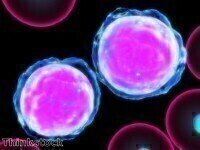-
 ZEA can trigger cell death in leukaemic tissue, analytical chemistry indicates
ZEA can trigger cell death in leukaemic tissue, analytical chemistry indicates
Electrophoretic Separations
Analytical chemistry links ZEA with leukaemic cell apoptosis
Jan 05 2011
The researchers, from Mahidol University, Chiang Mai University and Chulabhorn Research Institute, discuss their findings in an article published in the Journal of Hematology and Oncology.
Using an analytical chemistry process based around two-dimensional polyacrylamide gel electrophoresis, they assessed the actions of zearalenone (ZEA) on human leukaemia cells.
ZEA is known as a phytoestrogen which arises from Fusarium, a genus of fungi which is filamentous in structure and contains a large number of different species.
The scientists found it to be capable of triggering apoptosis by subjecting leukaemic cells to unmanageable endoplasmic stress.
Articles published in the Journal of Hematology and Oncology are distributed on an open-access basis to raise understanding and awareness of issues relating to the diagnosis and treatment of cancer.
Digital Edition
Chromatography Today - Buyers' Guide 2022
October 2023
In This Edition Modern & Practical Applications - Accelerating ADC Development with Mass Spectrometry - Implementing High-Resolution Ion Mobility into Peptide Mapping Workflows Chromatogr...
View all digital editions
Events
May 05 2024 Seville, Spain
May 15 2024 Birmingham, UK
May 19 2024 Brno, Czech Republic
May 21 2024 Lagos, Nigeria
May 23 2024 Beijing, China













